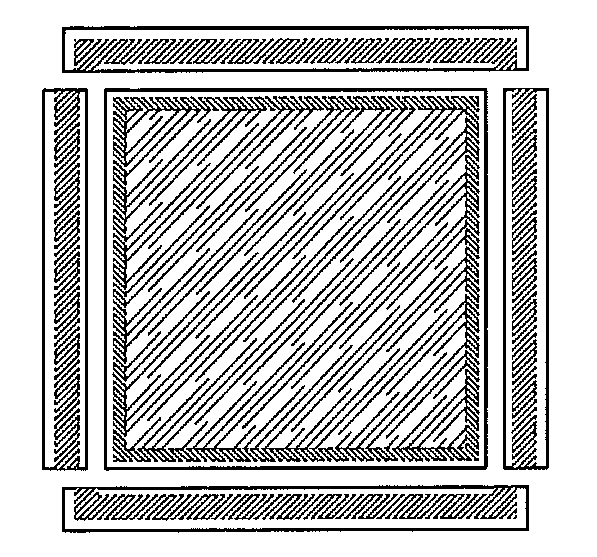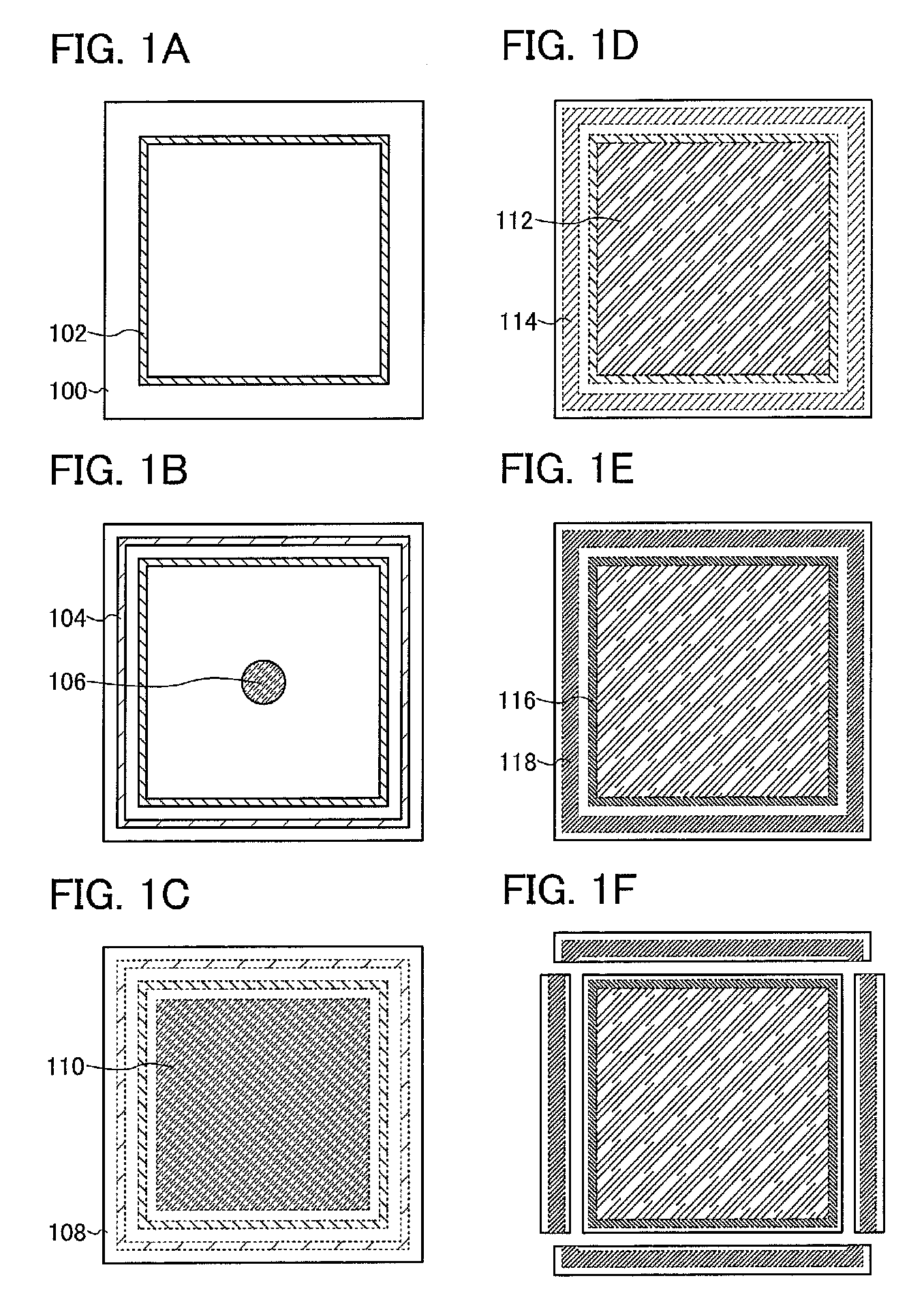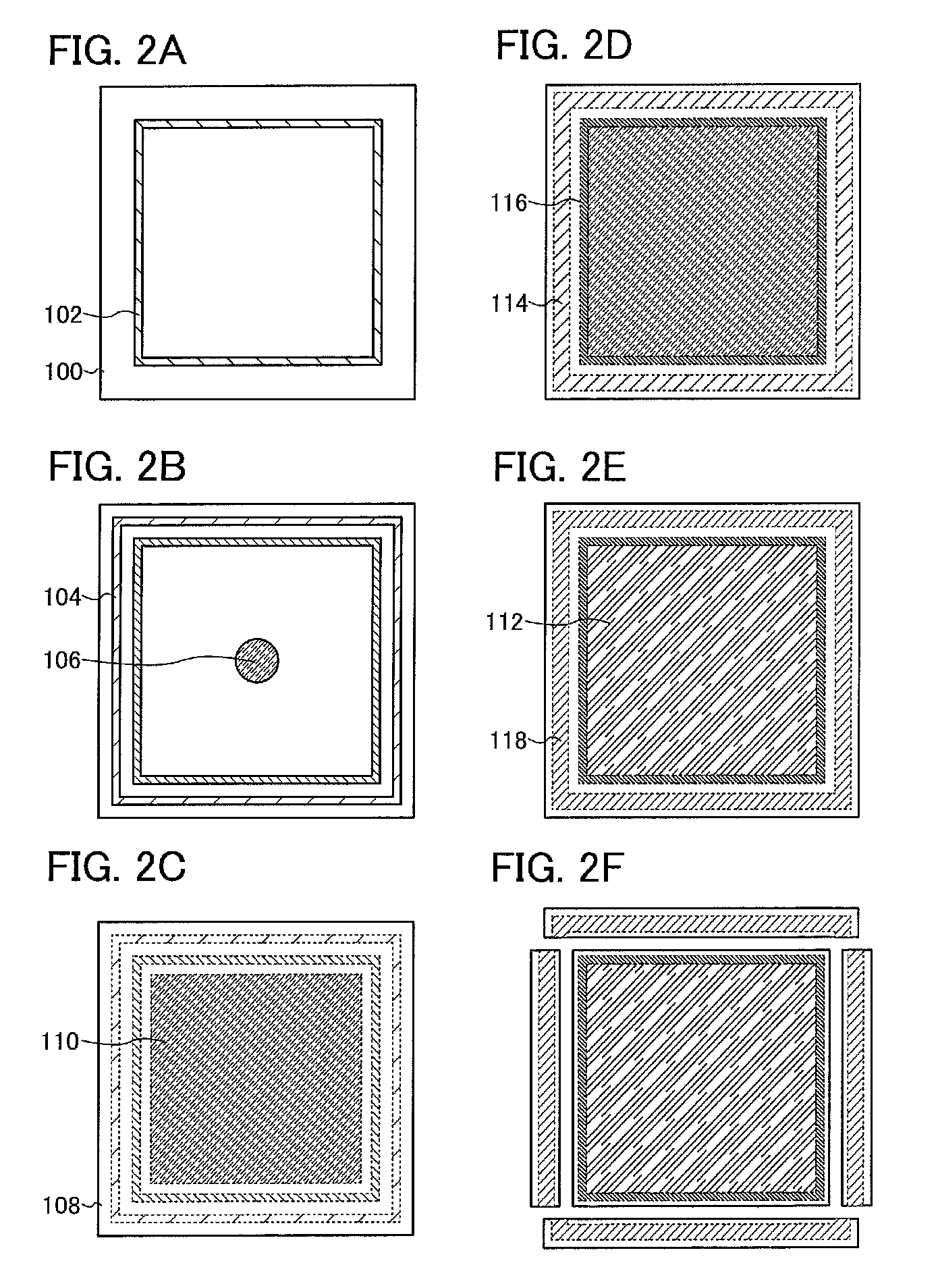Method for manufacturing liquid crystal display device
a liquid crystal display and liquid crystal technology, applied in the field of liquid crystal display devices, can solve the problems of reduced viscosity of sealant, liquid crystal layer with stable blue phase cannot be formed, liquid crystal material might be irradiated, etc., and achieve the effect of increasing the width of sealant and improving adhesion
- Summary
- Abstract
- Description
- Claims
- Application Information
AI Technical Summary
Benefits of technology
Problems solved by technology
Method used
Image
Examples
embodiment 1
[0039]In this embodiment, an example of a method for manufacturing a liquid crystal display device is described with reference to drawings.
[0040]First, a first substrate 100 is prepared, and a first sealant 102 is formed over the first substrate 100 (see FIG. 1A).
[0041]As the first substrate 100, glass substrates used for electronics industry (also called a “non-alkali glass substrate”) such as an aluminosilicate glass substrate, an aluminoborosilicate glass substrate, or a barium borosilicate glass substrate; a quartz substrate; a ceramic substrate; a plastic substrate; or the like can be used. An element such as a transistor for forming a pixel and the like of a liquid crystal display device may be provided over the substrate.
[0042]The first sealant 102 can be formed using a thermosetting resin. The thermosetting resin is a resin cured by heat treatment. For the thermosetting resin, an epoxy-based resin, an acrylate-based (urethane acrylate) resin, or the like can be used. A fille...
modified example
[0070]FIGS. 1A to 1F illustrate a case where the first sealant 102 is post-cured after polymer stabilization treatment; however, this embodiment is not limited to such a manner. For example, as illustrated in FIGS. 2A to 2F, the second substrate 108 and the first substrate 100 provided with the first sealant 102 may be attached to each other, the second sealant 104, and the liquid crystal material 106 (see FIGS. 2A to 2C), and then heat treatment may be performed to post-cure the first sealant 102 (see FIG. 2D). After that, polymer stabilization treatment may be performed (see FIG. 2E). That is, FIGS. 2A to 2F illustrate a case where the order of the step in FIG. 1D is replaced with the order of the step in FIG. 1E in the steps illustrated in FIGS. 1A to 1F.
[0071]Note that FIGS. 2A to 2F illustrate a case where the substrates are cut after polymer stabilization treatment (see FIG. 2F); however, the substrates may be cut in a period after the first sealant 102 is post-cured and befor...
embodiment 2
[0076]In this embodiment, a method for manufacturing liquid crystal display devices, which is different from the method in Embodiment 1, is described with reference to drawings. Specifically, a step of taking out a plurality of panels (obtaining a plurality of panels) from one panel is described. Note that the manufacturing method described in this embodiment has a lot in common with those in FIGS. 1A to 1F and FIGS. 2A to 2F. Therefore, description of common portions is omitted and different portions are described below.
[0077]First, the first substrate 100 is prepared and a plurality of first sealants 102a, 102b, 102c, and 102d is formed over the first substrate 100 (see FIG. 3A).
[0078]The first sealants 102a to 102d can be formed using a thermosetting sealant. The description of the first sealant 102 in Embodiment 1 can be referred to for details of materials used for the first sealants 102a to 102d and the like; therefore, the description thereof is omitted here.
[0079]Further, af...
PUM
| Property | Measurement | Unit |
|---|---|---|
| Temperature | aaaaa | aaaaa |
| Phase transition temperature | aaaaa | aaaaa |
| Temperature | aaaaa | aaaaa |
Abstract
Description
Claims
Application Information
 Login to View More
Login to View More - R&D
- Intellectual Property
- Life Sciences
- Materials
- Tech Scout
- Unparalleled Data Quality
- Higher Quality Content
- 60% Fewer Hallucinations
Browse by: Latest US Patents, China's latest patents, Technical Efficacy Thesaurus, Application Domain, Technology Topic, Popular Technical Reports.
© 2025 PatSnap. All rights reserved.Legal|Privacy policy|Modern Slavery Act Transparency Statement|Sitemap|About US| Contact US: help@patsnap.com



